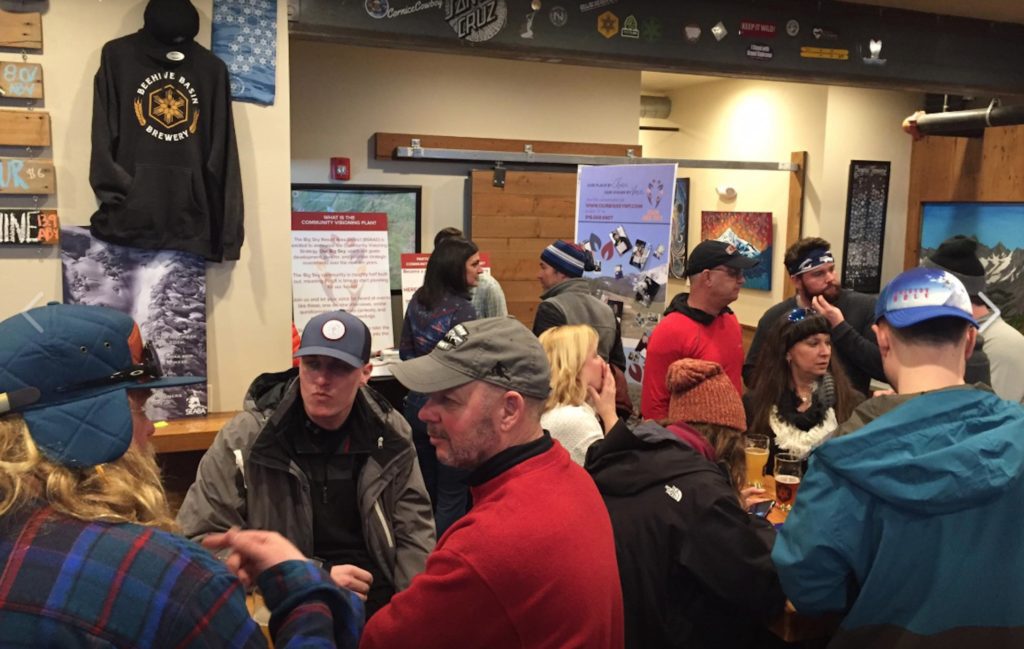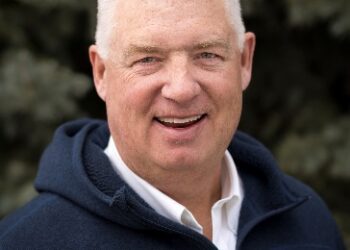Those who speak up
By Bay Stephens EBS LOCAL EDITOR
This is the fifth installment of “Growing Pains,” an ongoing series centered on Big Sky’s growth, the challenges and potential opportunities it presents.
BIG SKY – On May 16, the Big Sky Chamber of Commerce hosted an event at Lone Peak Cinema called the Big Sky Community Building Forum as part of National Infrastructure Week, during which stakeholders provided updates on developments and community projects underway in Big Sky.
Forum presenters included representatives of Lone Mountain Land Company, Spanish Peaks, Moonlight Basin, Big Sky Resort, Northwestern Energy, Gallatin County Planning and Zoning, Bozeman Health Big Sky Medical Center, Big Sky Community Housing Trust, Big Sky School District, Big Sky Community Organization, Big Sky Town Center and the Big Sky Resort Area District tax board.
In lieu of a town government, these for-profit and nonprofit organizations, along with homeowners’ associations and the BSRAD board, constitute the growing mountain hamlet’s local quasi-governance. Yet one organization has risen to be an increasingly prominent voice in facilitating how Big Sky operates, led by an ardent CEO. The local chamber of commerce, headed by Candace Carr Strauss, might have its hand on the tiller of Big Sky by default.
The chamber’s curriculum vitae is long in Big Sky, stretching back to the mid ‘80s when lodging tax dollars sparked the organization.
In recent years the chamber, in partnership with the Big Sky Community Organization, spearheaded the effort that resulted in the $10.4 million TIGER grant awarded for transportation last year, which is yet to be signed by county commissioners so that the money can be put to use. The chamber also created the Big Sky Community Housing Trust, which, with the support of resort tax dollars, has resulted in the first 52 deed-restricted units in the area, reserved for workforce housing.
“We see something going on, it needs to be addressed,” Carr Strauss said. “No one else is willing to do it [so] we take the lead on it, but then we get it to a point and then we birth it out to stand on its own. The housing trust is that perfect example.”
In early May, the chamber released the Big Sky Economic Profile, a calling card of sorts for Big Sky that provides key information to prospective residents and business owners, as well as the banks that consider funding their business endeavors. Created by Bridge Economic Development, a Portland, Oregon-based economic consulting firm, the profile provides a snapshot of Big Sky and its growth, including how resort tax allocations have increased by 190 percent since 2009, that the five-year population growth is estimated to be 21.3 percent and that the number of businesses has increased by 17 percent in the past five years.
When Carr Strauss arrived in 2017, she formalized a regular biannual schedule for the Joint County Commissioner meetings, which she said were set up ad hoc beforehand.
To be clear, in unincorporated Big Sky the chamber has long played a nontraditional and involved role in the community’s operation, albeit to a lesser extent than today.
From 2000-2011, under the leadership of former executive director Marne Hayes, the chamber pounded the halls of the capitol to change legislation that made way for Lone Peak High School to open in 2009. In the mid-2000s, the chamber also undertook a strategic community visioning process similar to that currently being implemented by community planning firm Logan Simpson, which was hired by BSRAD. But today’s visioning process, Hayes says, is far more extensive.
Even before Hayes, Big Sky’s chamber played a central role in creating the Big Sky’s resort tax district that allowed dollars collected on “luxury” goods within the district to be spent as the local elected board—not the county—saw fit.
Largely because others have not stepped into positions of leadership, the chamber occupies a position of unique influence within the community. Under Carr Strauss’ management, the organization has further assumed the responsibility to the point where “Facilitating Local Governance” is a regular agenda item at its board meetings.
“The chamber gets the dialogue going,” said Kevin Germain, who sits on the organization’s board and chairs the resort tax board. “… The chamber has done an exemplary job of identifying community issues and shining a light on them.”
Germain, who is also vice president of planning and development for CrossHarbor Capital’s Lone Mountain Land Company, says Big Sky functions well with its current medley of informal governing bodies.
“We should really be commended of the hard work and dedication that our citizens put into the multiple volunteer boards that govern our community,” he said. “I applaud the ‘bootstrap’ mentality of Big Sky residents. People see an issue and they jump in to fix it.”
While the system has worked to create the Big Sky of today, a place of growing popularity and accompanying development, preliminary results from Logan Simpson’s Community Visioning Strategy process known as Our Big Sky has revealed an undercurrent of anxiety among locals.
“We need a central governing body,” said one participant who was quoted in a Logan Simpson presentation. “We’ve grown too big to continue being run by HOAs, corporations and volunteers.”
Others added that Big Sky lacks a centralized leadership with a structure of accountability, as well as proper zoning, planning, resource management and a central platform for open discussion between locals.
“The biggest thing the community needs at this point is a common vision,” wrote another commenter.
The growing role the chamber plays in fulfilling governing needs in Big Sky has not been well received by some members of the community.
“The chamber represents business, governments represent people,” said resort tax board vice chair Steve Johnson. “While the chamber’s efforts to address this need are appreciated, decisions about local government are by law the decision of those locally governed: people who live and are registered to vote here. [These decisions are] theirs and theirs alone.”

In Big Sky, formal leadership falls to no one entity or individual explicitly. The resort tax board exercises the power of the purse, doling out money to the nonprofits and organizations that, in its collective opinion, stand to most benefit the community. Resort tax board members are at least elected, thereby representing the local community, but they were not elected to lead Big Sky, according to Germain. They were elected to handle resort tax collections and allocations.
In the eyes of Gallatin County residents, nonprofits have the greatest positive impact on the community, according to a summary report from an event held last October called “A Seat at the Table,” which gathered locals across the county to discuss change in the growing communities. In Big Sky, these nonprofits’ boards are not elected, but instead are run by those who are able and passionate to volunteer.
Meg O’Leary, who worked for 23 years as former director of sales and marketing for Big Sky Resort before serving as director of Montana’s Department of Commerce under Gov. Steve Bullock from 2013-2016, said this is how Big Sky has had to function.
“You need everybody at the table sharing their leadership and experiences,” she said, adding that even without a formal government, Big Sky’s operational approach has been a source of admiration for other communities around the state.
“When I started in Helena, I realized Big Sky is pretty amazing,” O’Leary said. “A lot of communities around the state look to Big Sky for the kind of leadership that goes on here …[Many say] ‘If only we had [the money] Big Sky has.’ And I get to say, ‘If only you could coordinate and work together like Big Sky does.’ It’s pretty remarkable.”
O’Leary has been impressed by the chamber’s current staff calling the team “scrappy and strategic” as well as good listeners.
Despite this, Steve Johnson says locals often ask him, “Who’s going to be our voice?”
“I tell them, ‘You are your voice,’” Johnson said. “No one will intercede for residents except themselves.”
Many hopes hang on the final results of BSRAD’s community strategic visioning process, which will conclude at the end of 2019, especially in terms of giving a unified vision and actionable steps toward achieving that vision over the next decade.
Both Germain and Johnson see the process as an opportunity for all community members to voice what they really want Big Sky to become, which could significantly influence how BSRAD allocates funds. Carr Strauss was thrilled when the resort tax board committed to carrying the ball; if they hadn’t, the chamber would have, she said.
All three have urged as many locals as possible to participate in the process. Afterall, when it comes to governance in Big Sky, voices that don’t speak won’t be heard.
On June 11 and 12, Logan Simpson will continue the Strategic Visioning Process with small group session. Groups can RSVP for a 90-minute session to review what Logan Simpson has heard so far and continue to add to the picture. Visit OurBigSkyMT.com to sign up and to learn more.














